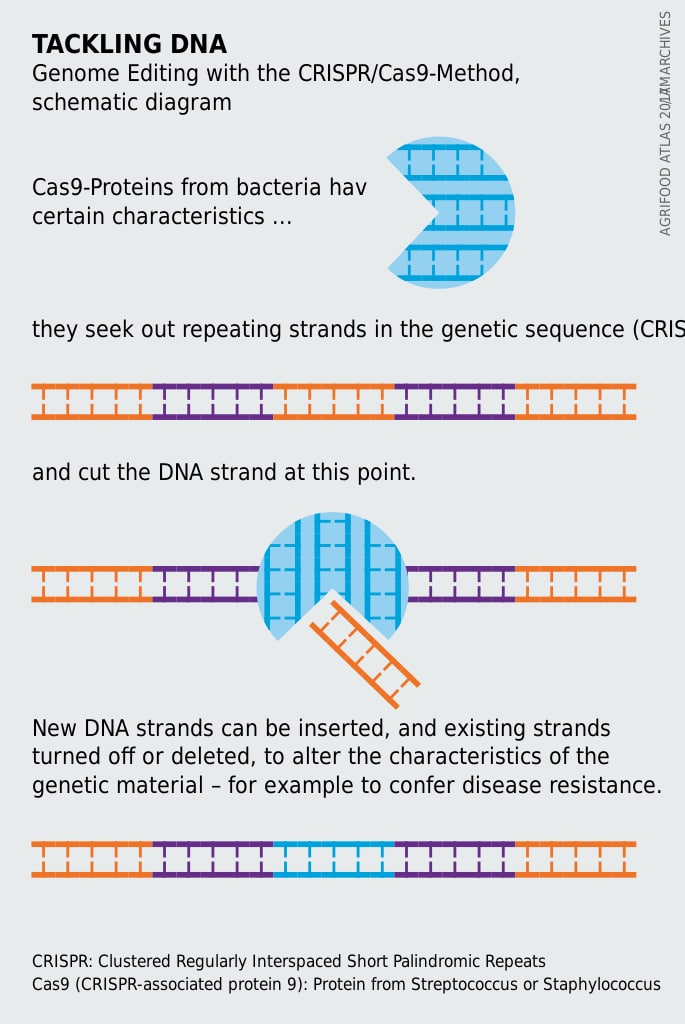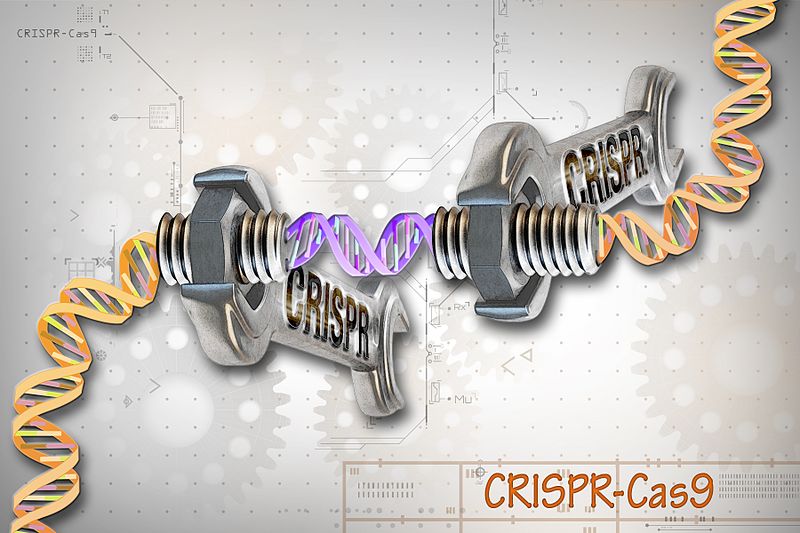Key Takeaways
- Plant scientists are turning to strategies adapted from the gene-editing tool CRISPR-Cas9 to improve the yield, robustness and consumer appeal of commercial cereals, fruit and vegetables.
- Sweeter strawberries are a nice start, but the same capabilities are being harnessed to generate crops with greater disease resistance and higher nutritional content.
About CRISPR-Cas9
- CRISPR–Cas9 is a one-of-a-kind technique that allows geneticists and medical researchers to modify specific sections of the genome by removing, adding, or changing DNA sections
- It is the simplest, most adaptable, most exact approach of genetic manipulation now available, and it is making a stir in the scientific community.
- What is the mechanism behind it?
- The CRISPR-Cas9 system is made up of two essential molecules that work together to modify the DNA.
- The enzyme Cas9 is one of them. This functions as a pair of molecular scissors, allowing portions of DNA to be inserted or removed by cutting the two strands of DNA at a precise point in the genome.
- Guide RNA is a kind of RNA (gRNA). This is made up of a short pre-designed RNA sequence (about 20 bases long) embedded in a larger RNA scaffold. The scaffold binds to DNA, while the pre-designed sequence directs Cas9 to the correct location in the genome. This ensures that the Cas9 enzyme cuts the genome at the correct location.
- The guide RNA is intended to locate and bind to a certain DNA sequence. The RNA bases in the guide RNA are complementary to those in the genome’s target DNA sequence. This means that the guide RNA will only bind to the target sequence and not to other parts of the genome, at least in theory.
- Cas9 follows the guide RNA to the same spot in the DNA sequence as the guide RNA and cuts through both strands of DNA.
- The cell recognizes that the DNA has been damaged and attempts to repair it at this point.
- Scientists can manipulate the DNA repair system to make alterations to one or more genes in a cell’s genome.
- The CRISPR-Cas9 system is made up of two essential molecules that work together to modify the DNA.

About Gene Editing
- Genome editing (also known as gene editing) is a set of techniques that allow scientists to change the Deoxyribonucleic Acid (DNA) of an organism .
- These technologies enable the addition, removal, or change of genetic material at particular locations throughout the genome.
- Advantages of Gene Editing
- CRISPR might be used to edit disease-causing genes in fully developed embryos, deleting the flawed script from that person’s future generations’ genetic code as well.
- It may potentially be able to implant genes that provide lifelong immunity to infection.
- CRISPR Could Lead to the Development of New, Healthier Foods: Crispr has the potential to affect yield, disease resistance, taste, and other qualities in agricultural crops.
- Disadvantages of Gene Editing
- Making irreversible modifications to every cell in future children and grandchildren’ bodies would be extremely dangerous human experimentation.
- Off-target mutations (unintentional genome edits), long-term editing impacts, genetic pathways in embryonic and foetal development, and long-term health and safety ramifications are all concerns.
- Changing one gene might have unintended and wide-ranging consequences on other regions of the genome, which would be handed down to future generations.
- Many people believe that tinkering with people’s genomes is unethical, and that nature should be left alone.
Content Source : The Hindu



